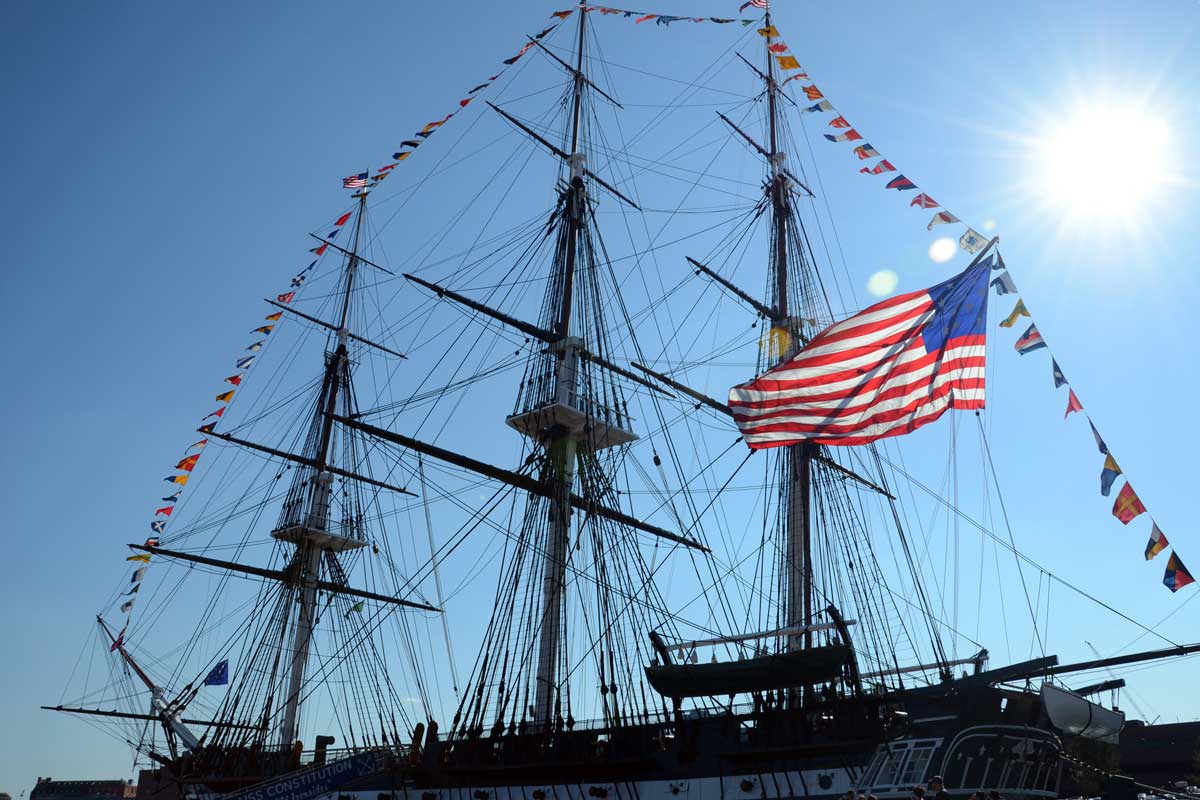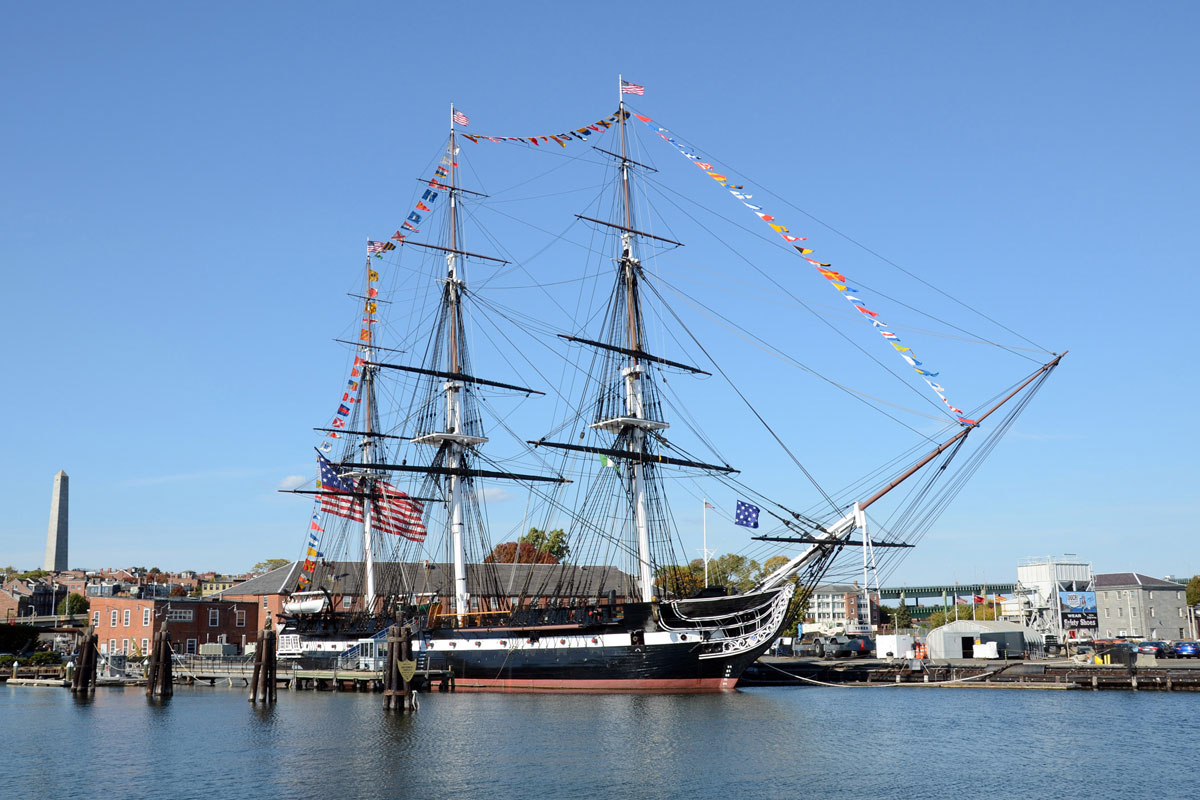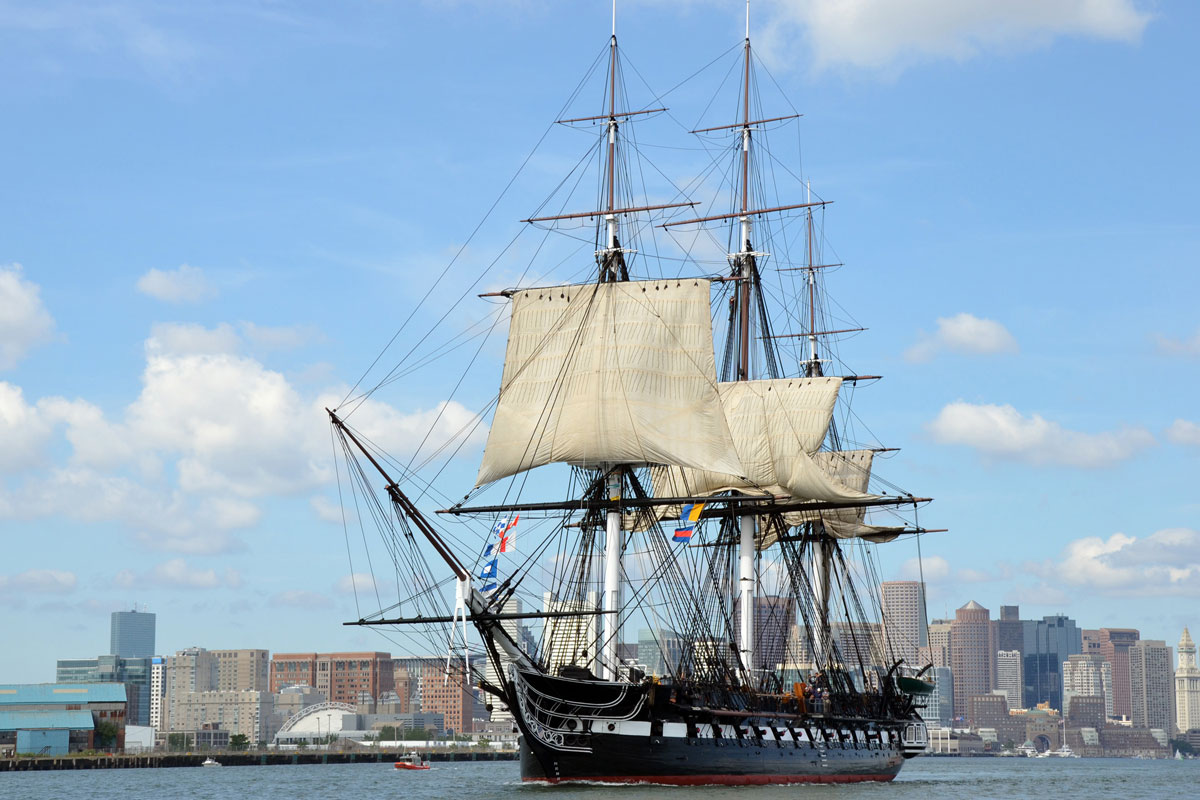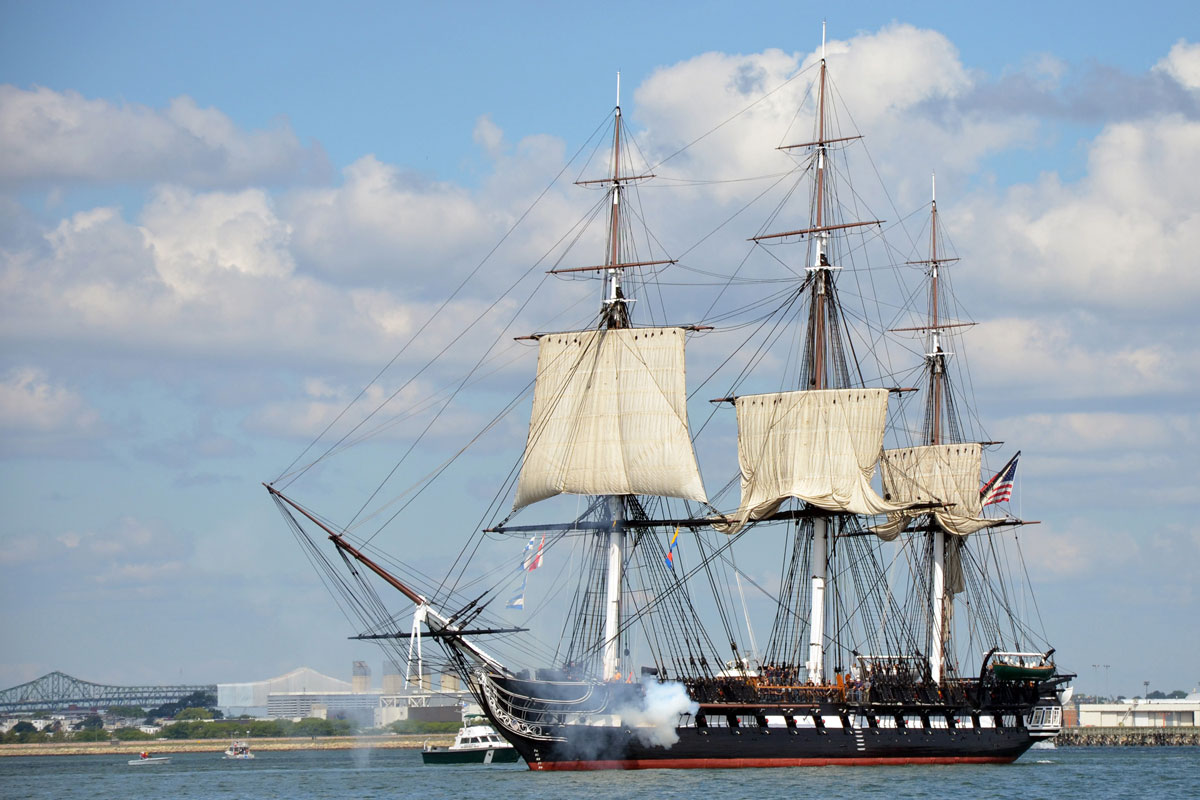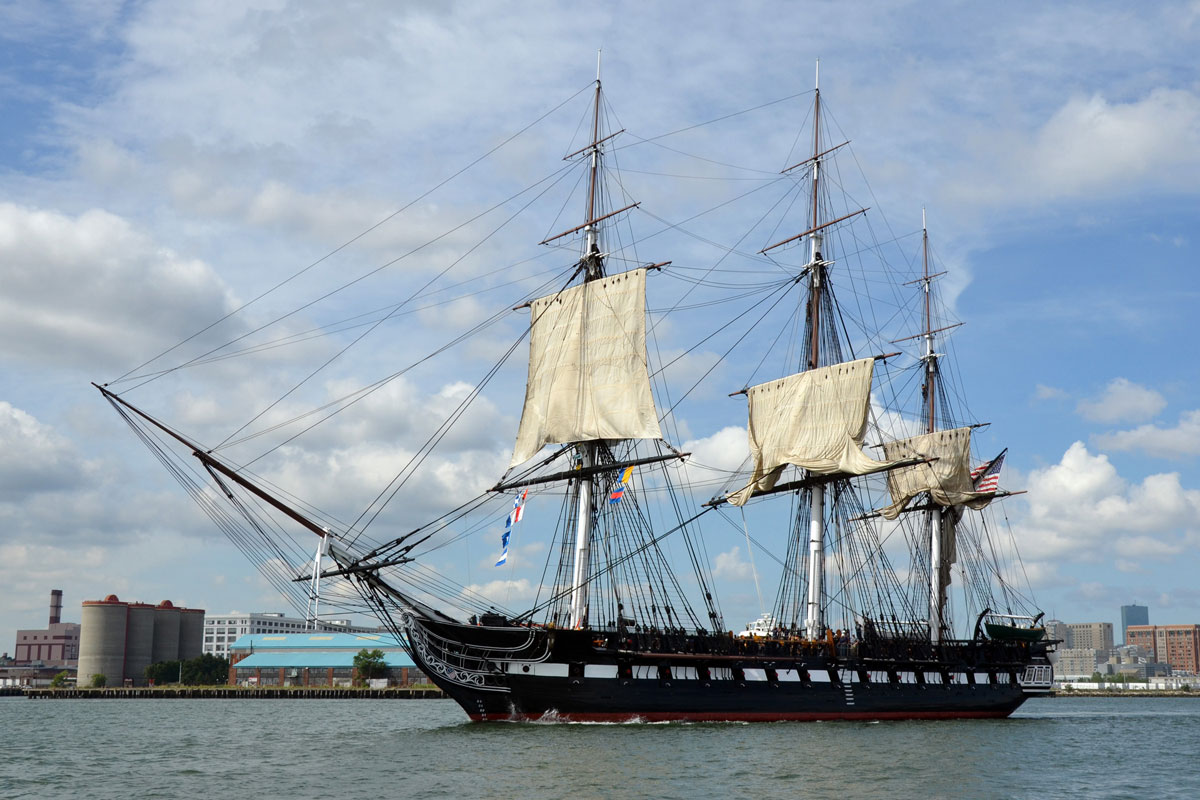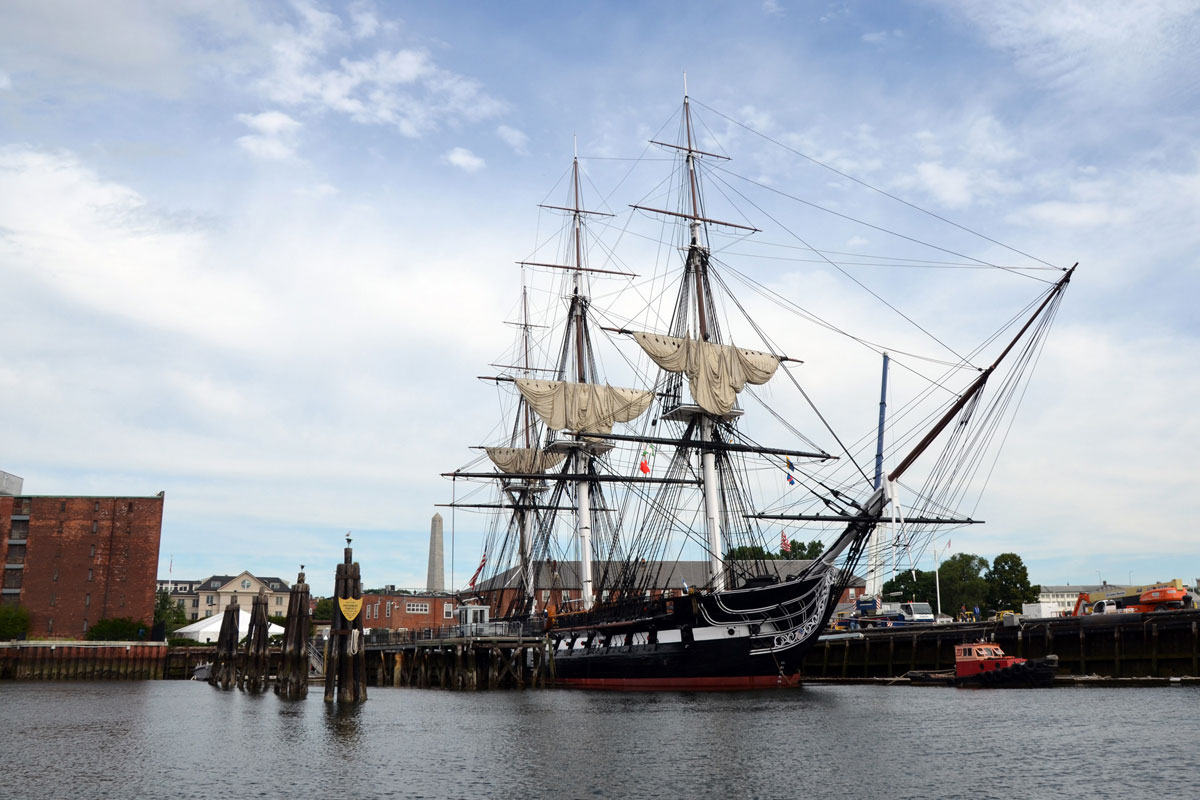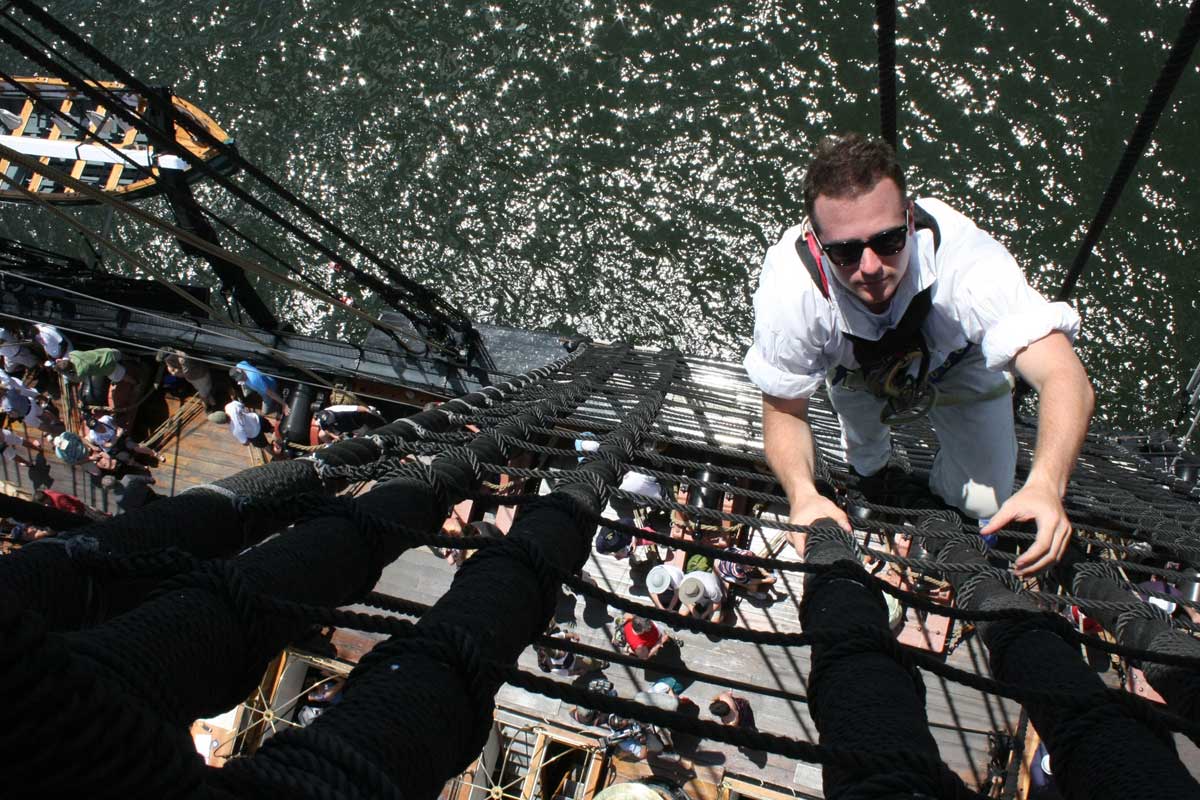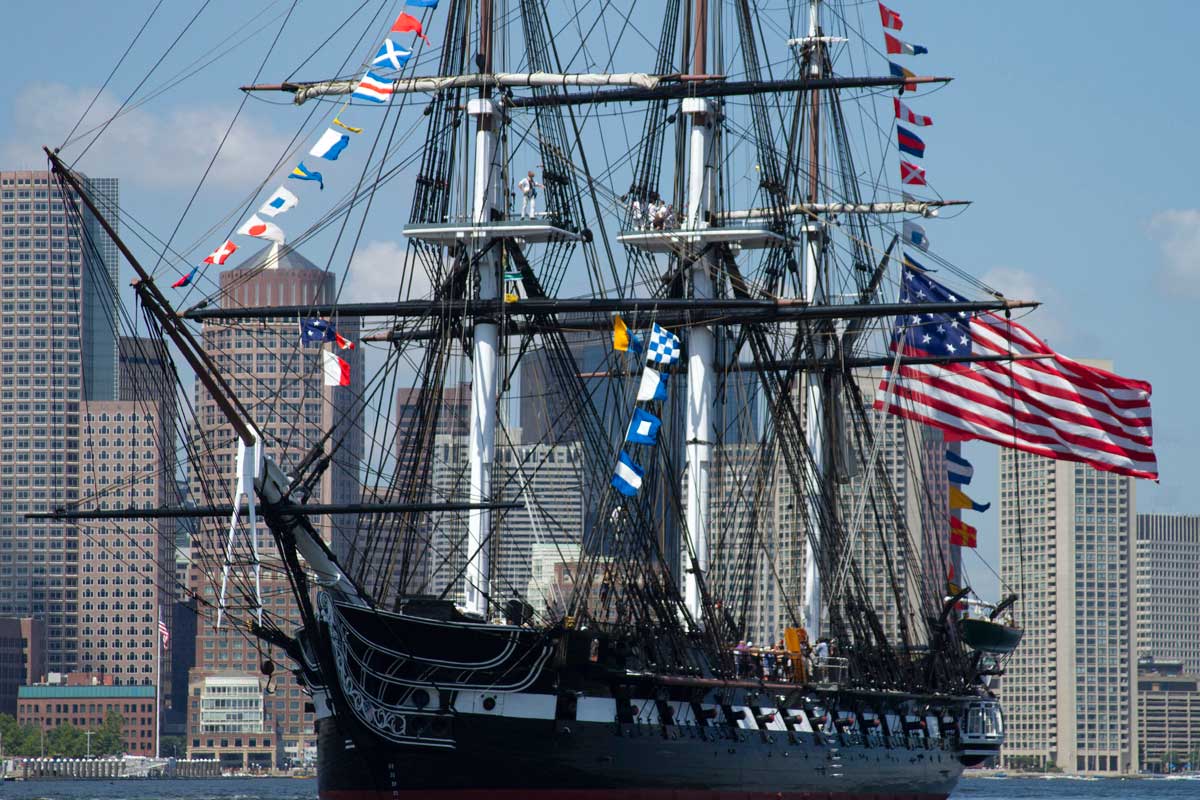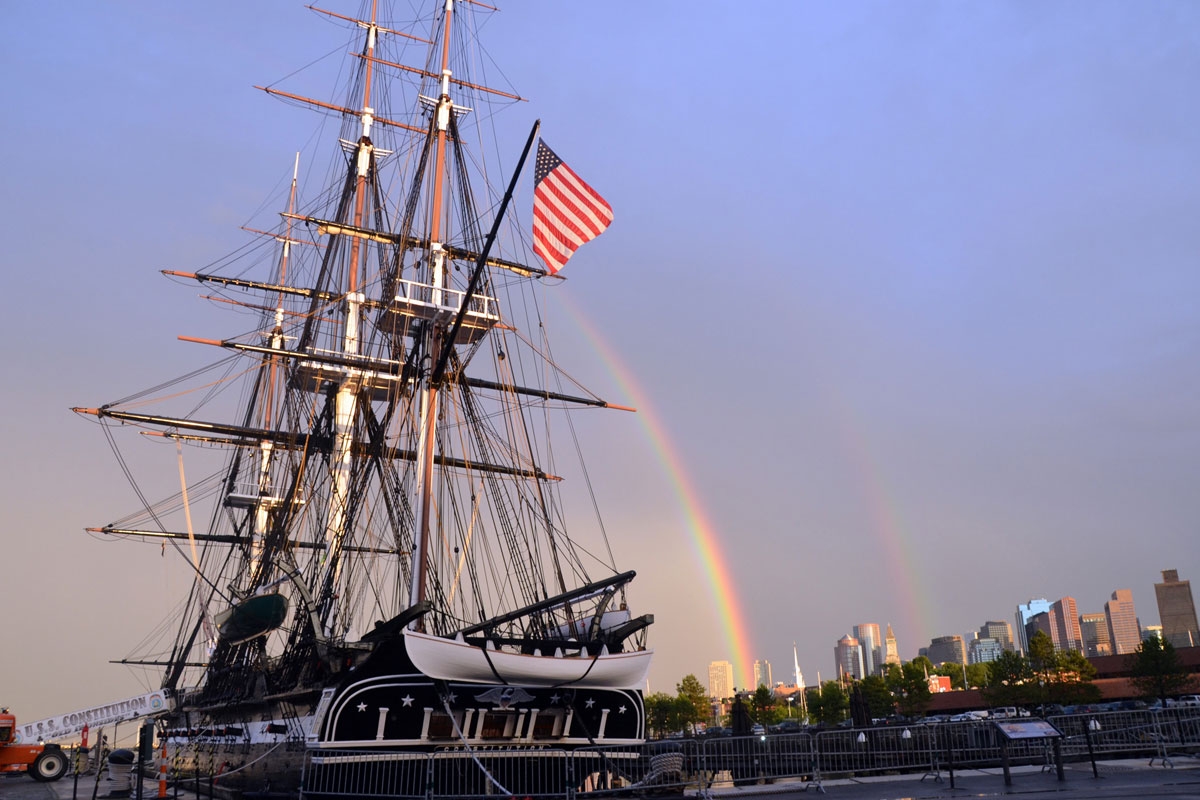USS Constitution was one of six frigates authorized for construction by an act of Congress in 1794. Joshua Humphreys designed them to be the Navy's capital ships. Larger and more heavily armed than the standard run of frigate, Constitution and her sisters were formidable opponents even for some ships of the line.
Built in Boston of resilient live oak, Constitution's planks were up to seven inches thick. Paul Revere forged the copper spikes and bolts that held the planks in place and the copper sheathing that protected the hull. Thus armed, she first put to sea in July 1798 and saw her first service patrolling the southeast coast of the United States during the Quasi-War with France.
In 1803 she was designated flagship for the Mediterranean squadron under Captain Edward Preble and went to serve against the Barbary States of North Africa, which were demanding tribute from the United States in exchange for allowing American merchant vessels access to Mediterranean ports.
Preble began an aggressive campaign against Tripoli, blockading ports and bombarding fortifications. Finally Tripoli, Tunisia and Algeria agreed to a peace treaty.
Constitution patrolled the North African coast for two years after the war ended, to enforce the terms of the treaty.
She returned to Boston in 1807 for two years of refitting. The ship was recommissioned as flagship of the North Atlantic Squadron in 1809 under Commodore John Rodgers.
By early 1812, relations with Great Britain had deteriorated and the Navy began preparing for war, which was declared June 20. Captain Isaac Hull, who had been appointed Constitution's commanding officer in 1810, put to sea July 12, without orders, to prevent being blockaded in port. His intention was to join the five ships of Rodgers' squadron.
Constitution sighted five ships off Egg Harbor, N.J., July 17. By the following morning the lookouts had determined they were a British squadron that had sighted Constitution and were giving chase. Finding themselves becalmed, Hull and his seasoned crew put boats over the side to tow their ship out of range. By using kedge anchors to draw the ship forward, and wetting the sails down to take advantage of every breath of wind, Hull slowly made headway against the pursuing British. After two days and nights of toil in the relentless July heat, Constitution finally eluded her pursuers.
But one month later, she met with one of them again -- the frigate Guerriere. The British ship fired the first shot of the legendary battle; 20 minutes later, Guerriere was a dismasted hulk, so badly damaged that she was not worth towing to port. Hull had used his heavier broadsides and his ship's superior sailing ability, while the British, to their astonishment, saw that their shot seemed to rebound harmlessly off Constitution's hull -- giving her the nickname 'Old Ironsides'.
Under the command of William Bainbridge, 'Old Ironsides', met Java, another British frigate, in December. Their three-hour engagement left Java unfit for repair, so she was burned. Constitution's victories gave the American people a tremendous boost to morale, and raised the United States to the rank of a world-class naval power.
Despite having to spend many months in port, either under repair or because of blockades, Constitution managed eight more captures, including a British frigate and sloop sailing in company which she fought simultaneously, before peace was declared in 1815. After six years of extensive repairs, she returned to duty as flagship of the Mediterranean Squadron. She sailed back to Boston in 1828.
An examination in 1830 found her unfit for sea, but the American public expressed great indignation at the recommendation that she be scrapped, especially after publication of Oliver Wendell Holmes' poem 'Old Ironsides'. Congress passed an appropriation for reconstruction and in 1835 she was placed back in commission. She served as flagship in the Mediterranean and the South Pacific and made a 30-month voyage around the world beginning in March 1844.
In the 1850s she patrolled the African coast in search of slavers, and during the Civil War served as a training ship for midshipmen.
After another period of rebuilding in 1871, she transported goods for the Paris Exposition of 1877 and served once more as a training ship. Decommissioned in 1882, she was used as a receiving ship at Portsmouth, N.H. She returned to Boston to celebrate her centennial in 1897.
In 1905, public sentiment saved her once more from scrapping; in 1925 she was restored, through the donations of school children and patriotic groups. Recommissioned in 1931, she set out under tow for a tour of 90 port cities along the Atlantic, Gulf and Pacific coasts of the United States.
More than 4,600,000 people visited her during the three-year journey. Having secured her position as an American icon, she returned to her home port of Boston. In 1941, she was placed in permanent commission, and an act of Congress in 1954 made the Secretary of the Navy responsible for her upkeep.
Now the oldest U.S. warship still in commission, Constitution remains a powerful reminder of the nation's earliest steps into dominance of the sea.
